After 4 months at the boatyard in Puerto Peñasco, we take a break from boat work and go on a sailing trip. We’ll sail 500 nautical miles (900 km) to La Paz as a crew aboard Sea Note, Ray’s boat. We met him at the boatyard and literally were immediately on board when the idea for this trip came up. Our departure was a bit hectic, because the painting of the freeboard did not go as planned.

It’s the middle of the night, the engine hums steadily, and the boat moves up and down rhythmically. Dave and I made ourselves comfortable in the cockpit of Sea Note with e-readers and podcasts. Ray is asleep downstairs in his cabin. The stars in the clear night sky are blurred through the protective plastic surrounding the cockpit. It is our first night watch on this trip. Eight hours earlier, we left Puerto Peñasco for Santa Rosalia, about 250 nautical miles (approx. 450 km) away.
A hectic couple of days
The days before sailing were hectic on Milagros. Although we had known for a long time that we would set sail in the first week of May, the moment came too soon. And a small aspect of our topside paintjob thwarted our plans for a relaxed departure.
The first night shift
The Totalboat paint for our topsides arrived 5 days prior to our departure. Our plan was to paint as many layers as possible before leaving. This because the dark Dalmatian look of Milagros heated the boat up quite a lot during the day. So, we prepared the surface for painting and got up at 4am to do the first coat. The early morning hours are when conditions for painting are ideal in the boatyard: There is no wind, the hull is cool, the outside temperature is pleasant and the sun is not shining onto the boat. Since Milagros is well lit in our corner in the boatyard, working at night is no problem either.
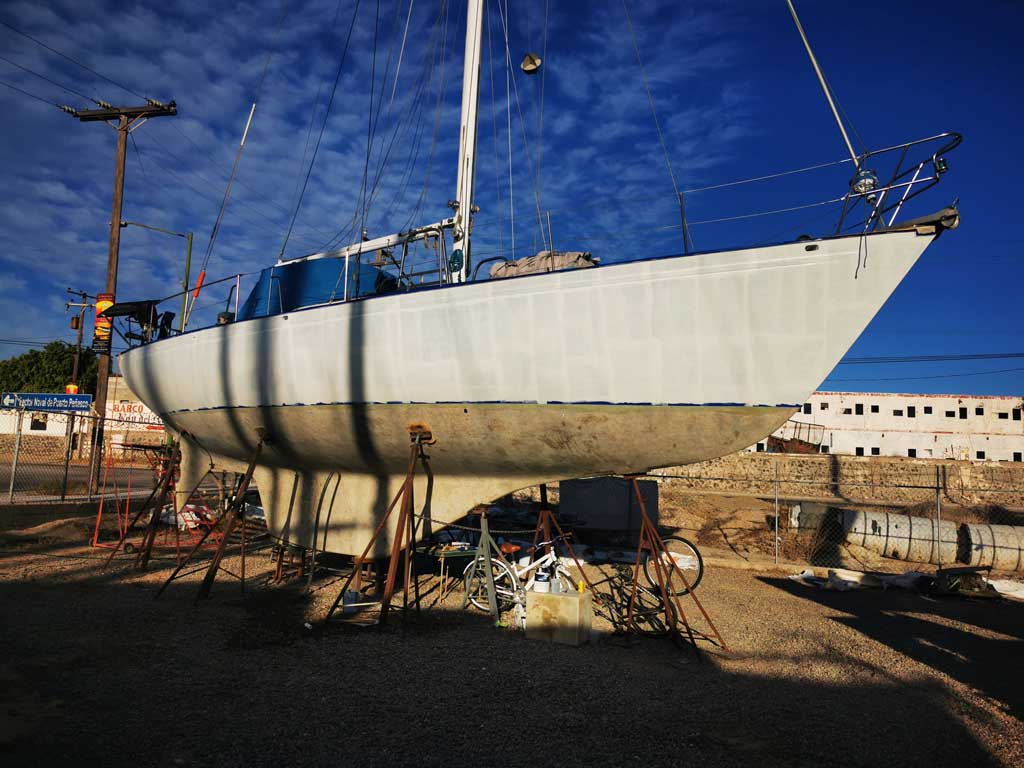
The nightmare begins
Following Totalboat’s instructions, Dave applied the first coat of Totalboat topsides primer. The simple paint job quickly turned into a nightmare. Dave had to paint like a madman because the paint dried extremely quickly. And despite all his efforts, streaks remained in the paint. A call to the paint manufacturer clarified the situation: this was normal. So, we continued as planned. After the paint had dried, Dave filled in the last bumps and small remaining pinholes. When the filler was dry, Dave sanded the areas with 240 grit sandpaper – and sanded through the primer in a few places. What a sh @ # $%!
It all adds to the experience
When we called Totalboat for the second time, we were told that sanding should only be done by hand. We had used the sander instead. The next day we got up at 3am anyway and applied the second coat of primer. In the process, we noticed that the paint no longer dried as quickly as it did with the first coat.

Paint not drying
Since time was running out, we wanted to leave Milagros with the two coats of primer for 6 weeks until we were back in mid-June. However, when we called Totalboat again, it turned out that it is not recommended to expose the primer to the sun for so long, as it has no UV protection. From then on, the stress started! We decided to have the top coat sprayed by the boatyard while we were away. We had another day to sand the freeboard and prepare it for spraying. But during a test sanding, Dave noticed that the paint wasn’t quite dry in certain places even after 24 hours. Oh man.
We hand over the work
So, we reluctantly left the sanding work to the shipyard team. We didn’t feel too comfortable not being on site and leaving the sanding to them. So, we wrote a whole page of instructions to give to Salvador Cabrales, the yard manager, and also briefed one of the workers on site. Would it all work out? That was no longer in our hands. We would be on a sailing trip to La Paz with Sea Note.
Sea Note
Sea Note is a 15.5 m long, two-masted Endeavor 43 with which its owners Ray and Chicgaila have covered over 45,000 nautical miles in the last 10 years. Unfortunately, they have to sell the boat for health reasons, and we as a crew help to bring Sea Note to La Paz. We accompany Ray on his last trip with Sea Note, so to speak.

Galley 
V-Berth 
Salon 
Cockpit 
Our first night at sea
Our first sunset at sea was gigantic. Incredible colours in the background and fin whales cavorting in front of it. That’s how it has to be. For me, it was the first night trip since our sailing trip to Cape Verde in 2018. Unfortunately, we couldn’t sail because the wind was constantly blowing from the direction we wanted to go. But we quickly got used to the hum of the engine and life on the water. We divided the night into 4-hour shifts: from 6pm to 10pm, 10pm to 2am and 2am to 6am. The surroundings and the course are thereby checked regularly. We didn’t have to steer ourselves – the autopilot did. Under sail, you would also check the positions of the sails. You would. But we didn’t. Because there was no wind from a sailable direction.

Dave meditating on the bow 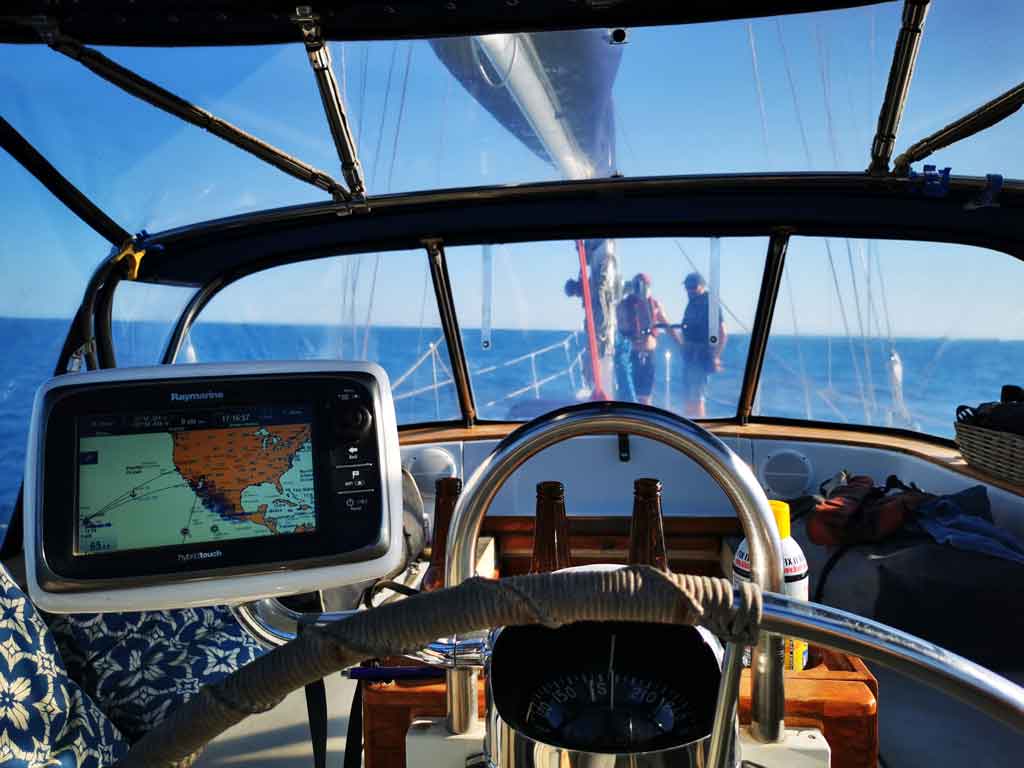
Flying in your sleep
Sometimes there was quite strong wind and waves directly on the bow. This meant that the bow would move up and down several metres. Dave and I were slightly lifted off the mattress in our front cabin, and then pushed back into it to the rhythm of the waves. At the same time, the water hit the hull next to your head and 5 knots (9 km/h), our average cruising speed under engine, felt incredibly fast. I totally like that.
Life at sea
The normal daily rhythm is completely changed on such passages. You sleep when you are tired (except when you are on watch) and eat when you are hungry (apart from dinner, which we always had together). In between, you read, talk, write, look at the water, or repair something. My favourite watch is the first one, because after that I can sleep continuously until at least 6am. And coffee is ready when I get up.
The first anchor beer
After 2.5 days of non-stop motoring, we reached Santa Rosalia at 2am. The docking manoeuvre in the well-lit marina went smoothly. Afterwards we treated ourselves to a docking beer and enjoyed the silence after all the hours of engine noise. After sleeping in the next day, we had breakfast at a taco stand around the corner and scouted out a Chinese restaurant where we wanted to have dinner.
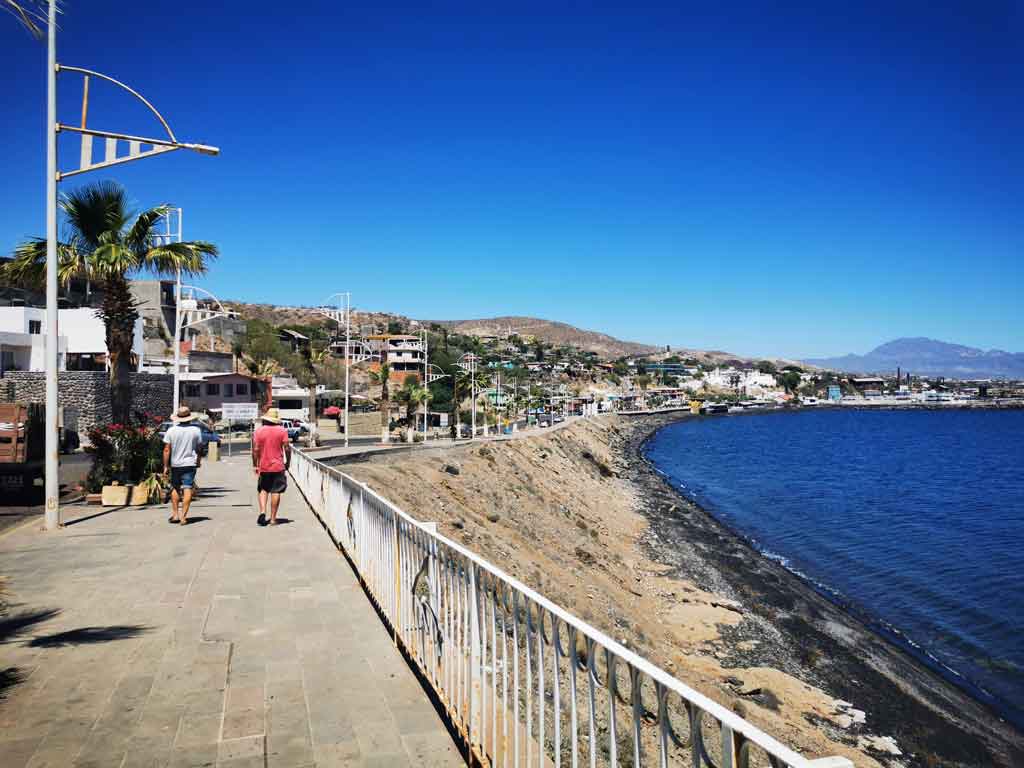
Chinese community
In 1903, the French mine operator “El Boleo” brought 3,000 Chinese workers to Santa Rosalia. Because of the poor working conditions no Mexicans could be persuaded to work there. That is why there is a large Chinese community and, accordingly, some Chinese restaurants.
Mine town atmosphere
While walking through Santa Rosalia we enjoyed the mining town atmosphere. Most of the houses are built in colonial style and are well preserved. I could really imagine how they used to ride horses through the town, past workers who loaded the railroad cars with copper ore. We also saw the Eiffel Church (Iglesia de Santa Bárbara) that Dave and crew missed on the way to Puerto Peñasco with Milagros. In Santa Rosalia I noticed how much I miss the green in Puerto Peñasco and how pleasant the shade of a tree is.


Pati enjoying the shade of a tree 
Santo Domingo
The next day we left the marina just after sunrise. Our destination for the day was the anchorage of Santo Domingo in the Bahia de Conceptión, 40 nautical miles (approx. 70 km) away. We chose this bay as our next destination because strong winds were forecast, which we wanted to protect ourselves from. Shortly before 3pm we reached the bay and anchored. Ray took over lowering the anchor and I was at the helm. The wind predicted for the afternoon then came in a weakened form, so we did without a small swim or a shore leave.

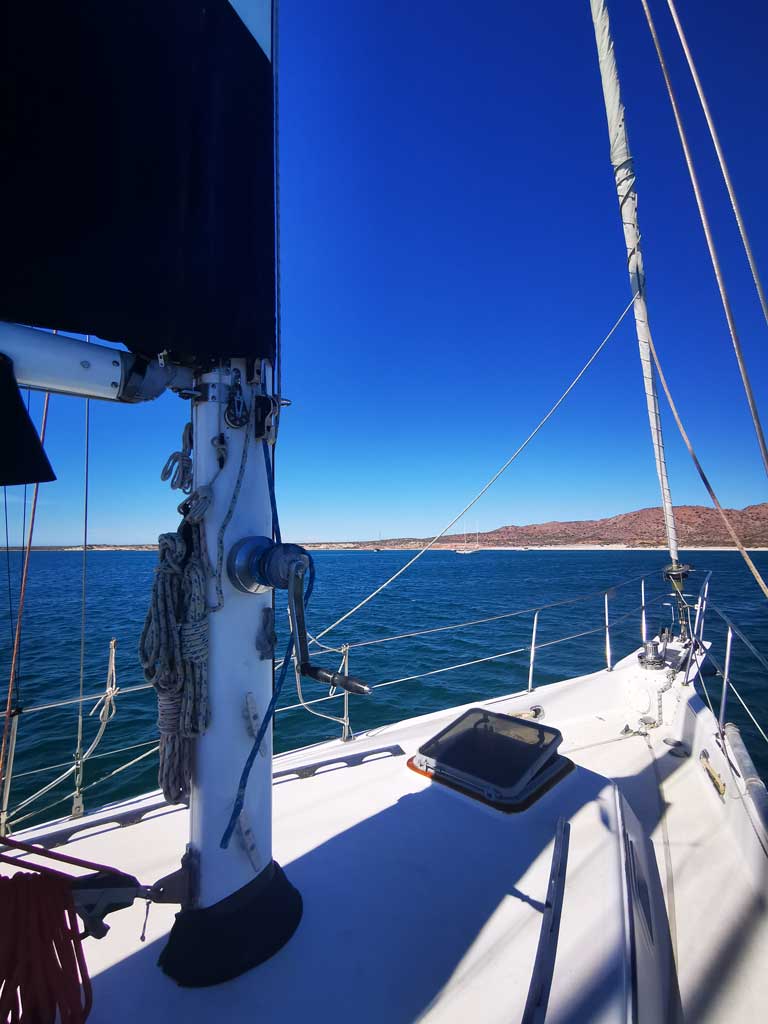
Santo Domingo
Change of plan
Originally, we wanted to stay at anchor overnight in Santo Domingo and continue our journey the next day. As we had mobile phone reception, we were in contact with SV Cavu and SV Alegría. We then decided that we could make a stopover and meet up with them near Loreto, which is about 80 nautical miles (140 km) away. So, we changed our plan and scheduled our departure for 8pm that evening. We treated ourselves to a homemade pizza and a beer for dinner, not knowing that we would be glad of this refreshment later.

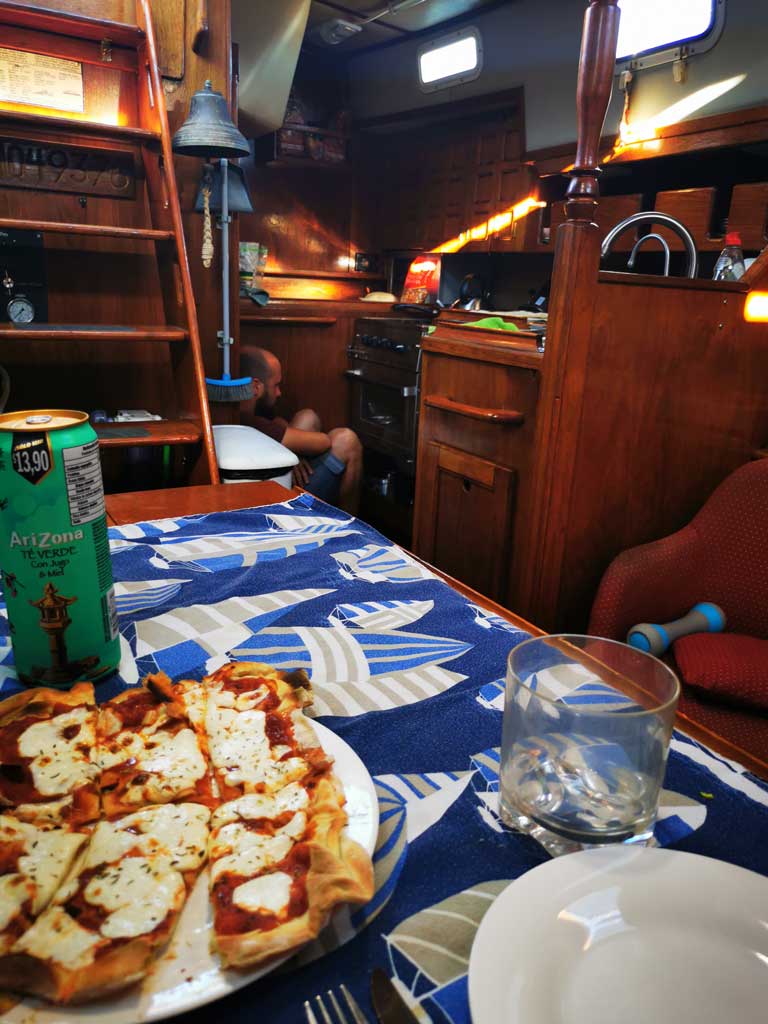
Dave checking the pizza











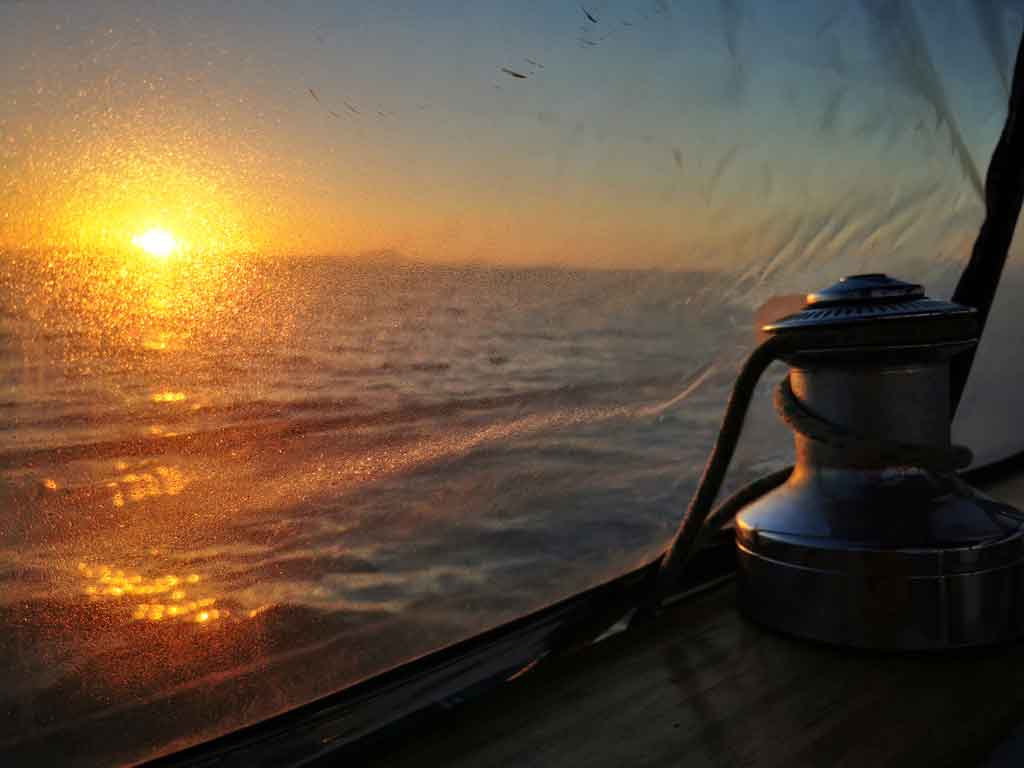


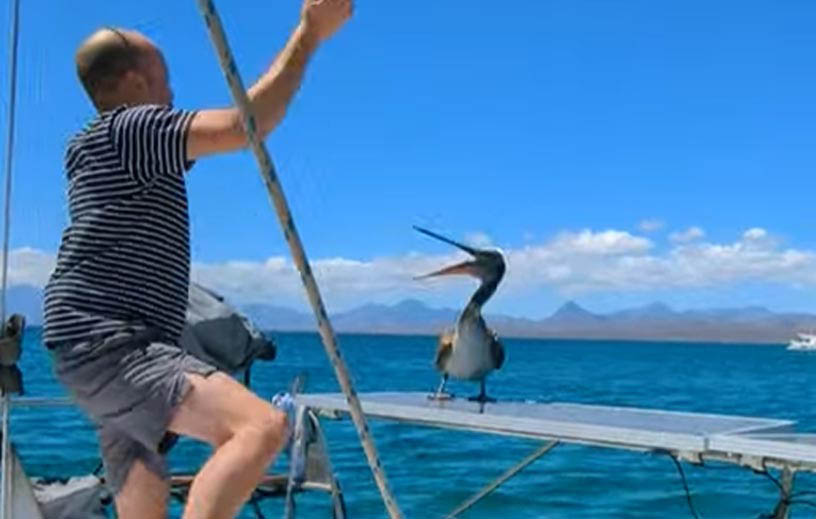

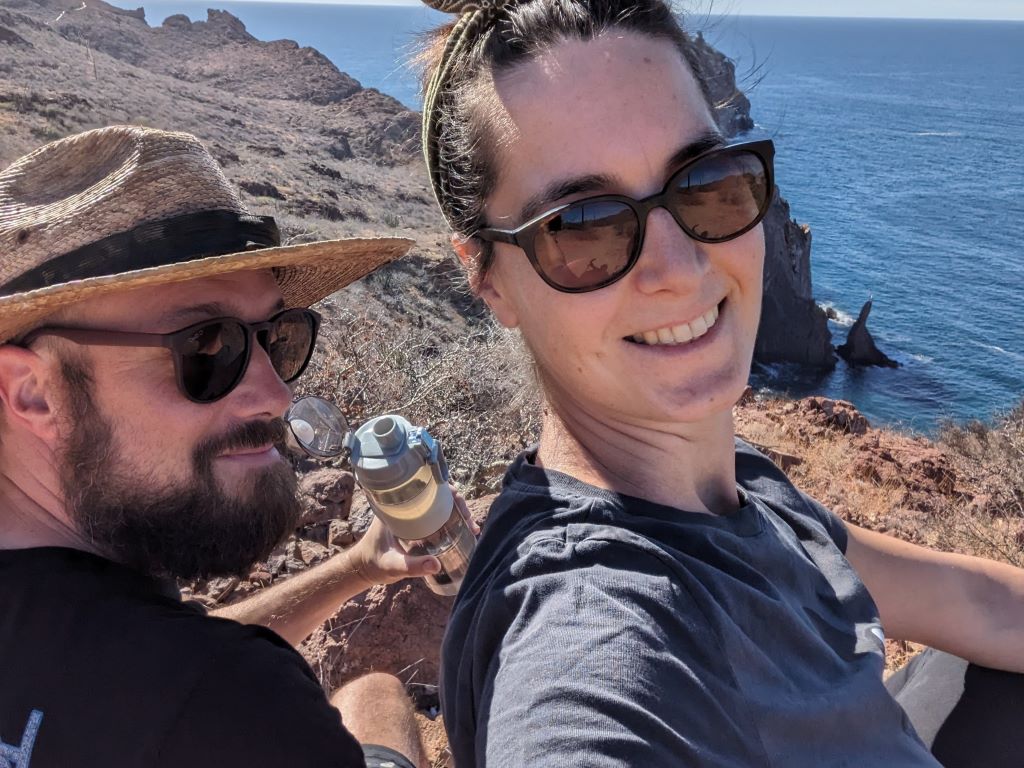
4 Comments
Hans
Diese Erholung habt Ihr nach dem Farb-Frust auch verdient! Wobei solche Erfahrungen auch Profi-Seglern mit über 20-jährigem Marine-Know How nicht erspart bleibt.
Gratulation zum tollen viertelseitigen Wochenblatt-Artikel.
Patricia
Danke Hans! Wir hoffen, dass es mit der Farbe klappt, wenn auch erst beim zweiten Mal.
Kajetan
Den Wochenblatt Artikel hätte ich fast übersehen! Danke für den Tipp (lese halt nur die Reinacher News gründlich!) Und wie immer spannender Bericht welcher mit seinem Ende einiges an Spannung aufkommen lässt! Bin allerdings zuversichtlich, dass mit einem so tollen Boot und erfahrener Crew eine Fortsetzung des Berichtes folgen wird! Mast und Schotbruch und mehr als eine Handbreit Wasser unter dem Kiel!
Patricia
Vielen Dank für den lieben Kommentar!